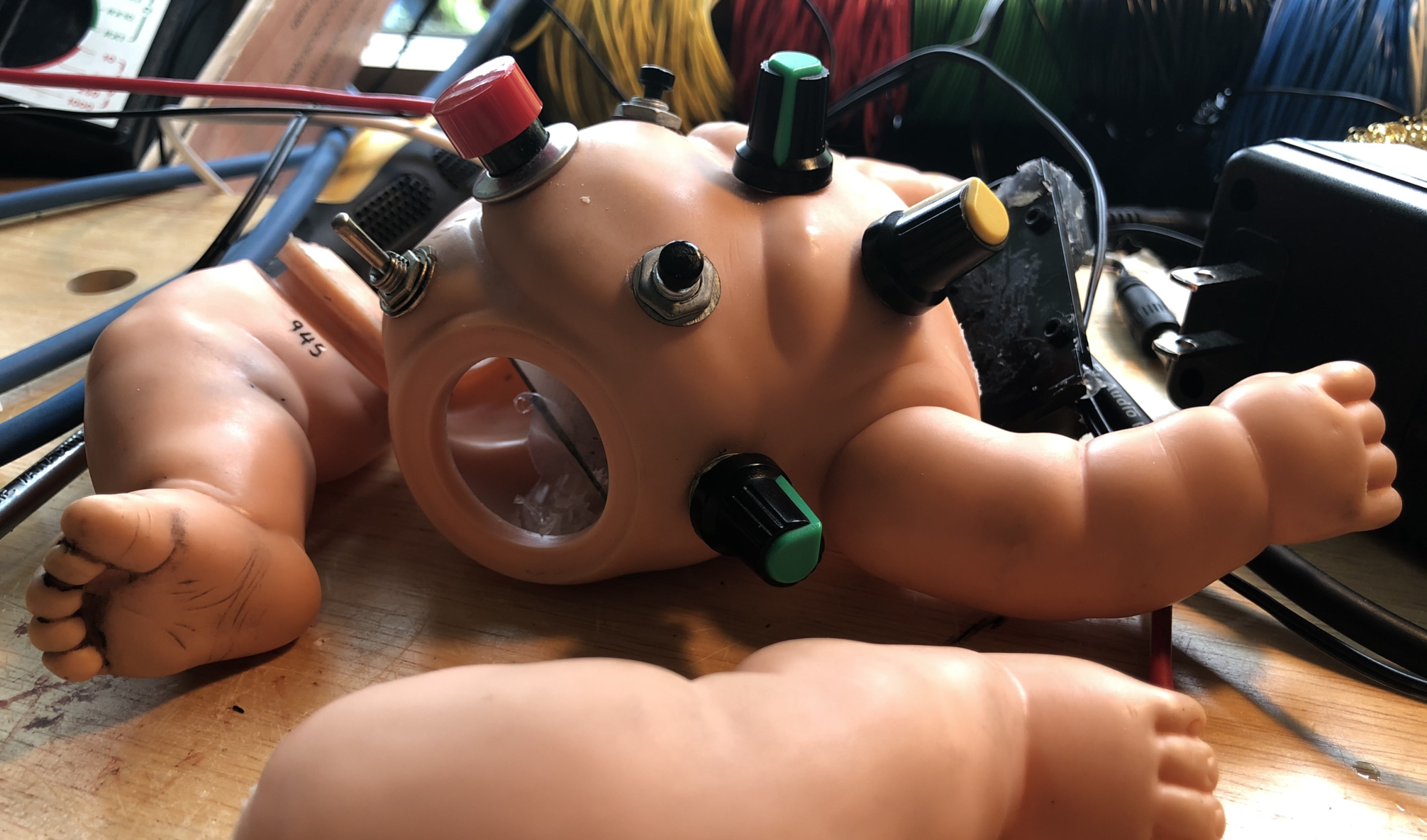
Elijah asked me to repair his baby doll noise synth, and I couldn’t resist a look under the hood—or, in this case, the chest cavity.
The circuit is based around a CD40106 hex oscillator, which is basically six Schmitt-triggers in an IC. If you poke around online, you will see myriad examples of uses and abuses of the chip to make noises, because all you need to add to turn each Schmitt-trigger into an oscillator is a resistor and a capacitor, the values of which will shape the resulting square wave. This means, of course, that the resistor itself could be variable: a potentiometer, a light sensor, a vactrol, or whatever.
I will, at some point, order a few up and start some experimental breadboards. If I come up with some cool stuff, I’ll post some vids and writeups about them here.
But here’s what I found most inspiring about this adorably grimy little noise synth: inside I noticed that two of the pots are dual gang. In looking over the schematics of other synth builds using the chip, I can see how it would be possible to wire this chip in such a way that a single knob could impact two separate oscillator setups. This struck me as a pretty elegant way to increase the synergistic chaos of the entire device. Now I am imagining many pairings made via dual gang potentiometers, like wiring it to change one oscillator’s frequency while simultaneously controlling a hipass/lopass filter for a different oscillator, or perhaps even using the second gang as a voltage sag.
I wish I could make out the PCB inside this baby doll, if only to see if it was still available for sale somewhere. It’s a neat little circuit, with switchable manual triggering, four knobs (TWO ARE DUAL GANG! DID I MENTION THAT?), and two momentary pushbuttons that do…. something.
As far the requested repair, the battery clip was hotglued over the decapitation wound, and it came off. I will figure out a way to attach it more securely, and I’m debating adding a DC power jack (though I know Elijah also has 9V battery clip adapters for his power supply).
After that’s done, I hope to find a few new tricks to build into future noise synth devices.